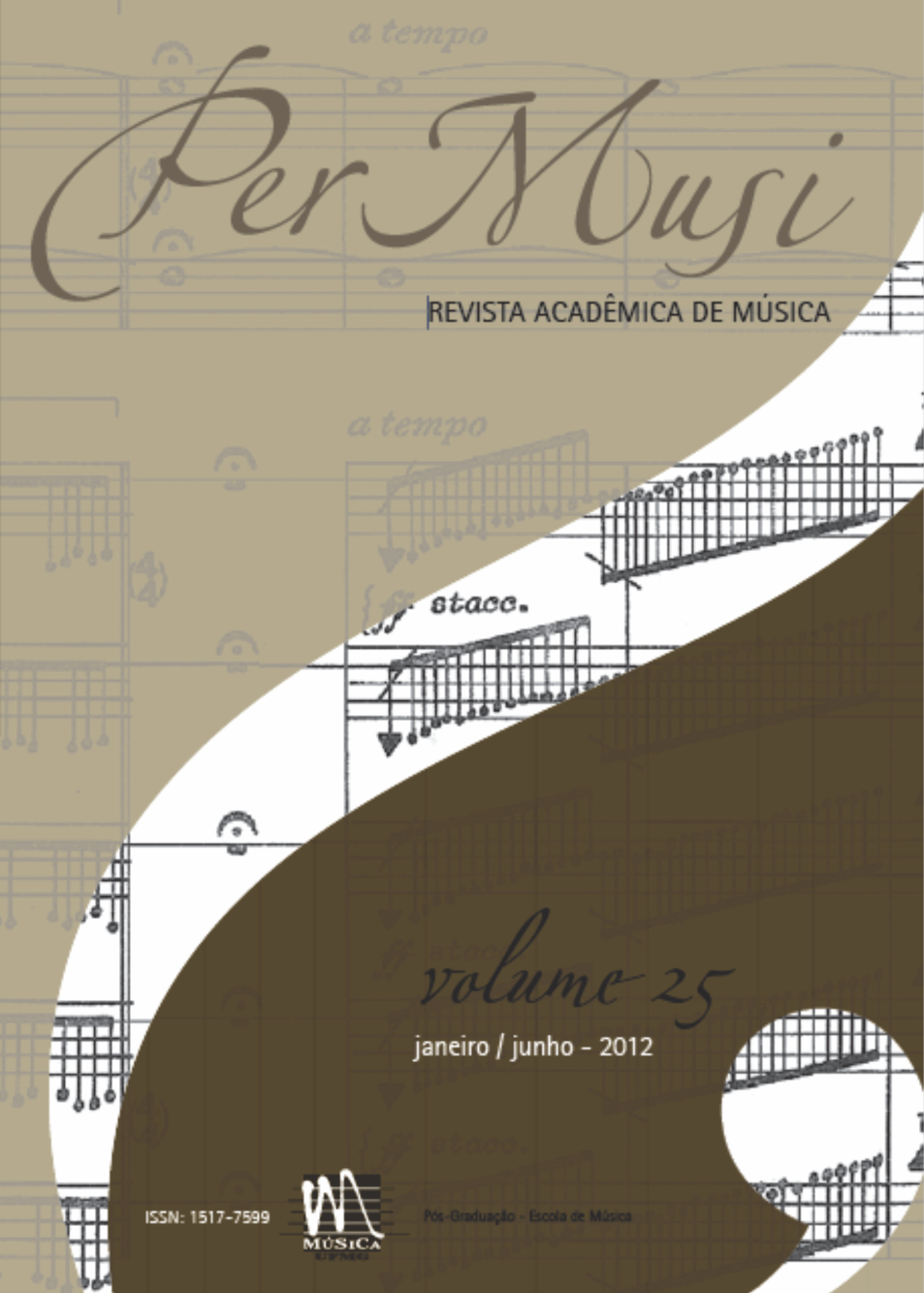Gagaku, de Olivier Messiaen
Palavras-chave:
Olivier Messiaen, Vanguarda musical, Influência não-ocidental, Música japonesa tradicional, Religião, Estética musicalResumo
A tensão entre nostalgia e inovação se manifesta de maneira única em Gagaku, o quarto movimento de Sept Haikai, de Olivier Messiaen. A religiosidade de Messiaen representa uma forma de nostalgia para a vanguarda intelectual francesa. O conceito de écriture tem um papel importante na dialética de passado/futuro desta transformação, causando estrutura e estilo a se diferenciarem baseados no princípio da não-imitação, e afirmando-se como o elemento formativo que faz de Gagaku uma peça distintamente francesa.
Referências
DUFOURT, Hughes. Musique, pouvoir, écriture. Paris: Christian Bourgois Éditeur, 1991. Tradução italiana: Musica, potere, scrittura. Lucca, BMG Ricordi S.p.A., 1997.
JOHNSON, Robert Sherlaw. Messiaen. Berkeley e Los Angeles: University of California Press, 1975.
KRAMER, Jonathan. The Time of Music. New York: Schirmer Books, 1988.
MALM, William P. Japanese Music and Musical Instruments. Rutland, Vermont & Tokyo: Charles E.Tuttle Company Publishers, 1959.
MARETT, Allan. Gagaku. Notas do CD Japanese Traditional Music - GAGAKU (Kunaicho-Gakubu) Gravação Tokyo: KING RECORD 1990.
MESSIAEN, Olivier. Technique of my Musical Language. Translated by John Satterfield. Paris: Alphonse Leduc, 1956.
_______. Sept Haikai. Paris: Alphonse Leduc, 1966.
_______. Traité de Rythme, de Couleur, et d’Ornithologie. Paris: Alphonse Leduc, 1994.
PERIER, Alain. Messiaen. Paris: Editions du Seuil, 1979.
SAMUEL, Claude. Olivier Messiaen: Music and Color. Conversations with Claude Samuel. Portland, Oregon: Amadeus Press, 1986.
STOIANOVA, Ivanka. “Narrativisme, Teleologie et Invariance dans l’Oeuvre Musicale a propos de Rituel de Pierre Boulez”. Musique en Jeu 25 (November 1976): 18-31.
STRYK, Lucien, Takashi Ikemoto. The Penguin Book of Zen Poetry. Londres: Penguin Books, 1981.
TERAUCHI, Naoko. “Gagaku”. The Garland Encyclopaedia of World Music, v.7. East Asia: China, Japan, and Korea. Robert C. Provine, Yosihiko Tokumaru, and J. Lawrence Witzleben, editores. New York: Garland Pub., 1998.
WATKINS, Glenn. Pyramids at the Louvre: Music, Culture, and Collage from Stravinsky to the Postmodernists. , Massachusetts: The Belknap Press of Harvard University Press, 1995.
Downloads
Publicado
Edição
Seção
Licença

Este trabalho está licenciado sob uma licença Creative Commons Attribution 4.0 International License.

Exceto onde está indicado, o conteúdo neste site está sob uma Licença Creative Commons - Atribuição 4.0 Internacional.












